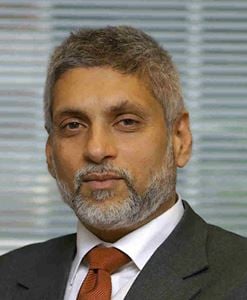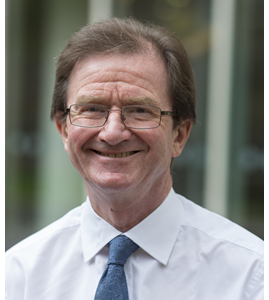
Building Back Better: Resilience Lessons From Not-For-Profit Leaders

Funding for charitable causes has reduced dramatically worldwide even though their services are in high demand. And yet, a large number of not-for-profit organizations have survived because they have displayed, in particular, boldness and innovation – two of the four pillars for smarter decision making, according to Crowe Global’s The Art of Smart methodology.
The other two pillars of diversity and growth will be necessary for not-for-profits as they start to tiptoe out of the pandemic. To better understand the sector-agnostic business lessons learnt from leaders operating in this area, The Art of Smart hosted a roundtable event featuring three experts.
The experts are: Pesh Framjee, Global Head of Social Purpose and Non-Profits at Crowe; Ingrid Srinath, Founder and Director of the Centre for Social Impact and Philanthropy (CSIP) at Ashoka University in Sonipat, India – the country’s first academic center focused on enabling strategic and robust philanthropy for social impact; and London-based Sam Younger, Chair of Voluntary Service Overseas (VSO).

Change is the only constant – managing existential threats
PF: Before the pandemic hit, we had planned a seminar on managing in a volatile, uncertain, complex and ambiguous world. Once the pandemic hit, it sold out immediately. People recognized that big existential threats were looming.
SY: Now more than ever, change is the only constant. However, in this time of significant uncertainty – whether about funding, need, or strategy – it has been extraordinary how quickly people have reacted to their new realities. Three-year plans became three-week plans and while organizations are challenging to change, people have been more adaptable than anyone would have predicted. That quick adaption has been one of the few positives. Leaders should be thinking about how they can translate and extend that agility in anticipation of future crises rather than reacting to them.
Assume good intention and celebrate everything
PF: Remote meetings with larger groups have been tough, and everyone is tired of them now. Sometimes tensions built up unnecessarily, with people cutting across one another. Previously, you might have been able to walk up to someone at lunchtime and say, ‘Sorry if you thought I was shutting you down; I wasn’t.’ Finding ways to engineer those vital water-cooler conversations virtually has been a challenge. We tried online drinks and quizzes and they helped for a while. What has been important is having more personalized chats to ask how people and their families are. The discussion about wellbeing, which has been lingering in the background for some time, is now moving to center stage.
IS: In India, we were given very little notice there would be a lockdown – only four hours, which sparked chaos. The first step I took was to make sure everyone knew that the organization and their jobs were secure. I think that was important, so they didn’t worry and could focus externally on what other people needed. Whether something was happening with a donor or a partner, I tried to provide as much – rather than too little – information as quickly as possible. For new hires, we have invented something called the Online Offsite, which has helped to onboard them. For everyone around the world, videoconferences have become so important. To help manage conflict, we have highlighted, in bold capital letters, “assume good intent” before every meeting. To keep morale high, we have also celebrated everything, from birthdays to anniversaries, new babies, etc. We have had lots of virtual parties, customized videos, and online balloons.

Saving for a rainy day – but what’s next?
SY: Charities have been forced to use the cash reserves they saved for a rainy day during the pandemic. This raises the question of how do you generate more funds in a tight funding environment? You have to fund your current and upcoming activities while also gradually building back up your reserves, so you are in a good position for future challenges. Those who operate in this area are very resilient and resourceful and need to plan every penny now. As we move to hybrid working, it will be interesting to see what is preserved from the coronavirus crisis. I strongly doubt that charities will be rushing everyone back to the office. But if not, there needs to be good coordination between people and teams so that they are productive when they do meet in person.
PF: The last 15 months or so have been exceptionally turbulent for not-for-profit organizations and the funding environment has been difficult, with patterns of influence and power shifting. People have realized they need to be developing new relationships and nurturing old ones. I think the following year will be even more challenging and lots of places will not be fully accessible or used until 2022. These challenges and the rise of digital technology creates exciting new opportunities for not-for-profits to firm up their messaging, broaden their reach and improve their impact.Develop richer working relationships
SY: The organizations that have done best have had sufficiently solid and positive links both with donors and their regular supporters and have made use of those relationships. At VSO, for example, we knew that we wouldn’t be able to do a great deal of new-donor recruitment during the pandemic, through networking events, or serendipitous meetings, or on the streets. So we focused more on nurturing our existing supporters and did better than we initially thought. Where you’ve got existing relationships, they can work well, even in the online environment. It’s crucial to build up that human capital. And now, as we begin to come out of the other side of the pandemic, we have to make sure we take all opportunities to develop existing working relationships and develop new ones when they arise.
Boldness and serving the local community wins the day
IS: Our research found that almost two-thirds (64 percent) of the nonprofits we surveyed in India said that they had been negatively impacted financially since the start of the pandemic. Interestingly, over a quarter (26 percent) reported that that had been impacted positively. So, we drilled down to find out what they had done and discovered three common characteristics:
- The organizations had very deep roots in their communities, allowing them to access the most important needs quickly.
- They had highly devolved decision-making mechanisms, enabling the front line to respond in the way it deems most suitable.
- They could harness both data and stories from the front line and transform them into compelling communications to all stakeholders.
This research helped us create better feedback loops, but the main message was: those organizations that have succeeded have stayed relevant, adapted at speed, and communicated comprehensively.
Building resilience for a brighter tomorrow
PF: As we look ahead, it is all about focusing on organizational resilience, building back better and in a more sustainable way. It’s essential to have the ability to adapt and pivot and be agile enough to cope with both incremental changes and sudden disruptions. One thing we know for sure is that uncertainty will remain. It is here that diversity is essential. We need to take this opportunity to be more diverse in the way we set up our leadership teams. I’m not just talking about race, age, gender, and so on. Diversity of thought must be at the core of the organization, so we can engender a better culture, encourage change, and move away from limiting ‘group think’ to accelerate innovation.
IS: About 29 percent of the nonprofits we spoke with acknowledged they were underprepared technology wise when the pandemic hit. The good news is around 36 percent of them have invested during the last 15 months, improving their digital capabilities. Perhaps they had no choice: digitize or perish. More than a 180 percent increase in online giving shows how important it is to be operating in that space. If there is a silver lining to this crisis, it has exposed the gaping inequalities in society and opened minds. Suddenly, policies that two years ago would be dismissed for being too radical are now being considered. And that is important – especially in places like India, where we have lost a decade of development progress during the pandemic. Almost 250 million Indians have been pushed below the poverty line.
SY: The message coming through is that none of us is safe until we are all safe. I hope that people – and countries – have realized that they can’t sit in their gated communities and do nothing outside. That gives me cause for hope. It’s in your interests to make sure resources and capacity go elsewhere as it will protect everyone. I think there will be a long-term underlying trend recognizing that we need interdependence and must act accordingly


Related Articles

